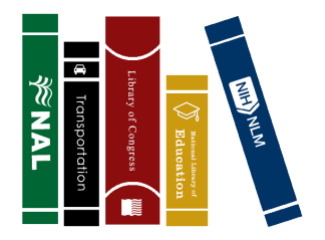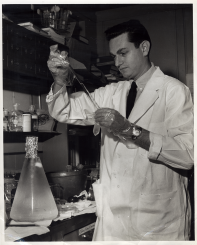“NLM Announces Expansion of PubMed Health
New Resources Create a Comprehensive Online Resource for Clinical Effectiveness Reviews
The National Library of Medicine (NLM), the world’s largest medical library and a component of the National Institutes of Health, announces the expansion of the information available from PubMed Health (http://www.ncbi.nlm.nih.gov/pubmedhealth/), which provides integrated access to clinical effectiveness reviews.
NLM’s National Center for Biotechnology Information (NCBI), in partnership with England’s national Centre for Reviews and Dissemination, the Cochrane Collaboration, the US Agency for Healthcare Research and Quality, and other agencies in the US and abroad, now makes available more than 18,000 clinical effectiveness reviews via PubMed Health. PubMed Health organizes these clinical effectiveness research results, including full texts as well as summary information, for consumers and clinicians.
Effectiveness studies are essential for informed clinical and consumer decision making. Multiple studies are necessary over time, and interpreting their complex and often conflicting results is a challenge.
Systematic reviews of clinical effectiveness studies address this need with rigorous scientific methodology. However, they are scattered across the biomedical literature and the Web sites of public health agencies around the world that produce many of them. The National Library of Medicine is uniquely positioned to gather these critical clinical resources in one place.
Users of PubMed Health can:
- Access the whole comprehensive collection of resources in a single search, including cancer information for consumers and clinicians from the National Cancer Institute
- See the results of a simultaneous search for reviews in PubMed
- Refer to consumer medical encyclopedia search results also delivered simultaneously
- Follow RSS feeds of featured reviews and “Behind Headlines,” which looks at the research behind news stories
- Learn to make sense of research results in its “Understand clinical effectiveness” and “Behind Headlines” sections
- Share resources via e-mail and social media with “Add this”
NLM invites you to visit PubMed Health, learn more about the Web site (http://www.ncbi.nlm.nih.gov/pubmedhealth/about/) or follow the project on Twitter @PubMedHealth (https://twitter.com/PubMedHealth) to help you keep up with the evidence on healthcare effectiveness.”
Source: NLM New files for the week of Dec 12, 2011 (NLM Announces)
 “Today, we’re asking “How many national libraries are there in the United States?”
“Today, we’re asking “How many national libraries are there in the United States?” PubMed was first released two decades ago in January 1996 as an experimental database under the National Center for Biotechnology Information (NCBI) retrieval system. The word “experimental” was dropped from the website in April 1997, and on June 26, 1997, a Capitol Hill press conference officially announced
PubMed was first released two decades ago in January 1996 as an experimental database under the National Center for Biotechnology Information (NCBI) retrieval system. The word “experimental” was dropped from the website in April 1997, and on June 26, 1997, a Capitol Hill press conference officially announced 

You must be logged in to post a comment.